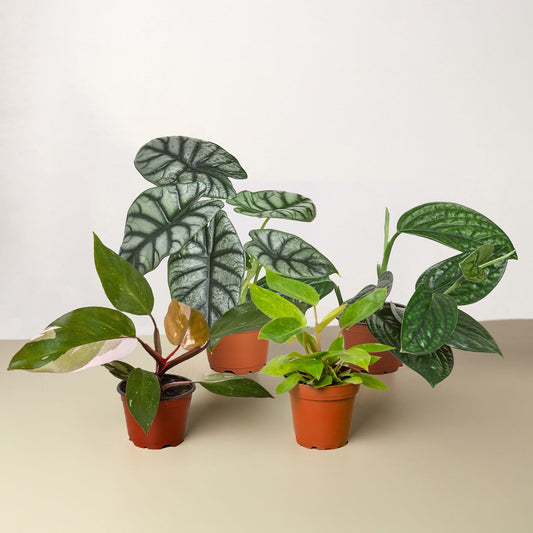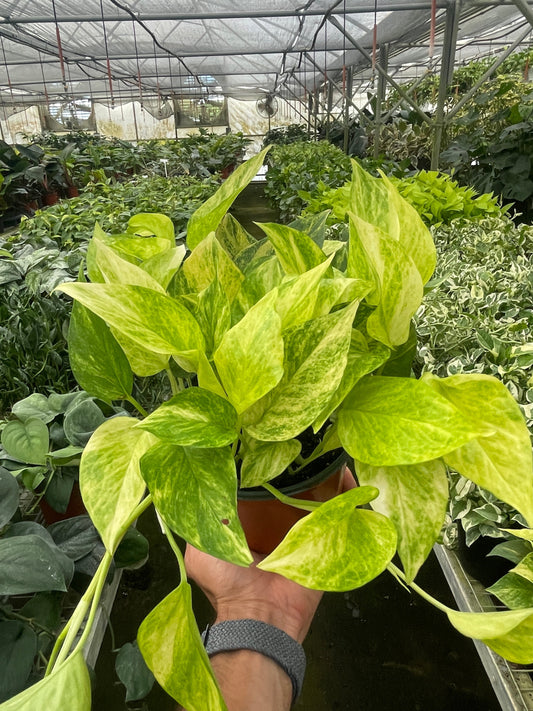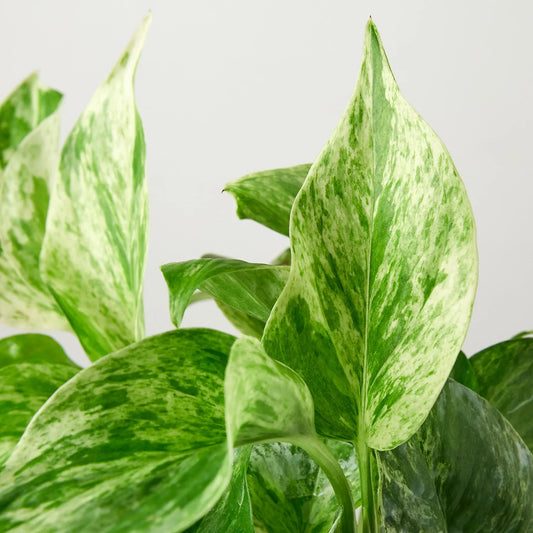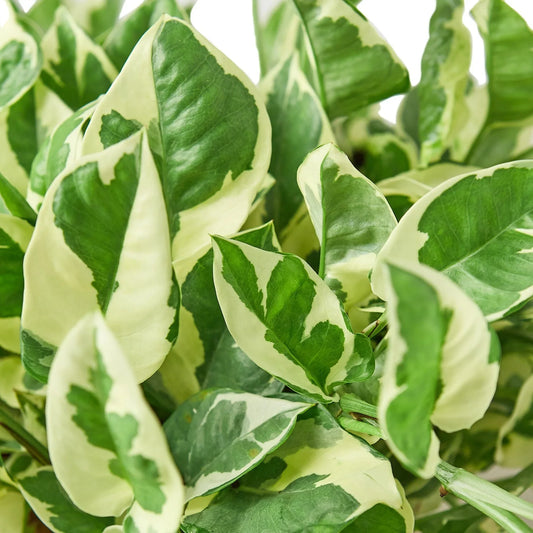How To Tell When It's Time To Water Your Philodendron
Cafe Planta Team
It's no secret that philodendrons are a favorite among houseplant enthusiasts. With their lush foliage and adaptability, they bring a touch of green to any room. Yet, even the most seasoned plant lovers can find themselves wondering, "When exactly should I water my philodendron?"
In this article, we'll look at the signs your philodendron gives when it's thirsty, how to water it properly, and some common mistakes to avoid. By the end, you'll feel confident in keeping your plant healthy and thriving.
Understanding Your Philodendron's Water Needs
Philodendrons, like most plants, have specific water requirements. While they’re known for being relatively low-maintenance, striking the right balance between too much and too little water is crucial. But how do you know what that balance is?
First off, it's important to know that philodendrons are native to tropical regions. This means they’re accustomed to consistent moisture, but they're not fans of being waterlogged. Overwatering can lead to root rot, a common pitfall for many plant owners. On the flip side, underwatering can cause wilting and yellow leaves.
So, where does this leave us? Generally, letting the top inch of soil dry out before watering is a good rule of thumb. This allows the plant to absorb moisture without suffocating the roots. However, checking the soil's moisture level isn't the only way to gauge your plant's needs.
Signs Your Philodendron Needs Water
Your philodendron is more communicative than you might think. It offers several visual cues when it's thirsty, and learning to recognize these signs is essential for proper care.
- Wilting leaves: If your plant's leaves are drooping, it might be crying out for water. However, wilting can also indicate overwatering, so check the soil before acting.
- Yellowing leaves: While some yellowing is normal as older leaves die off, if many leaves are turning yellow at once, it could be a sign of dehydration.
- Dry soil: As mentioned earlier, the top inch of soil should be dry before you water. If it feels parched to the touch, it's time to water.
- Leaf curling: Leaves that are curling inward can indicate the plant is trying to conserve moisture.
Noticing these signs early can prevent more serious issues and keep your plant looking its best.
The Finger Test: A Simple Way to Check Soil Moisture
One of the simplest and most effective ways to determine if your philodendron needs water is the "finger test." Here's how it works:
- Insert your finger into the soil up to the first knuckle (about an inch deep).
- If the soil feels dry, it's time to water.
- If it's still damp, hold off on watering for a few more days.
This method is not only easy but also helps you get in tune with your plant's individual needs. As you become more familiar with your philodendron, you'll start to notice patterns in its watering schedule.
Using a Moisture Meter
If you're someone who prefers a more technological approach, a moisture meter might be a great tool for you. These devices measure the moisture level in the soil and give you a reading, usually on a scale from dry to wet.
To use a moisture meter:
- Insert the probe into the soil, about halfway between the plant's stem and the pot's edge.
- Read the scale. A reading that indicates dryness means it's time to water, while a wet reading suggests you should wait.
While moisture meters can be incredibly helpful, they’re not foolproof. It's always a good idea to use them in conjunction with visual cues from your plant.
Proper Watering Techniques
Now that you know when your philodendron needs water, let's talk about how to water it correctly. Proper watering techniques can greatly influence your plant's health and longevity.
- Thorough watering: When you water your philodendron, make sure to do it thoroughly. This means watering until you see excess water draining out of the pot's bottom. This ensures the roots get enough moisture.
- Empty the saucer: If your pot sits in a saucer, empty it after watering. Standing water can lead to root rot.
- Water in the morning: Watering in the morning allows the plant to absorb moisture throughout the day, reducing the risk of fungal diseases.
By following these techniques, you can help ensure your philodendron remains healthy and vibrant.
Avoiding Common Watering Mistakes
Even with the best intentions, it's easy to make mistakes when watering your philodendron. Here are a few common pitfalls to avoid:
- Overwatering: This is probably the most common mistake. It's better to underwater slightly than to overwater. Remember, root rot is a serious issue.
- Inconsistent watering: Try to maintain a consistent schedule, but be flexible based on the plant's needs and environmental factors, like humidity and temperature.
- Using cold water: Always use room-temperature water. Cold water can shock the plant's roots.
Avoiding these mistakes will help you develop a more intuitive understanding of your plant's needs and create a healthier environment for it to thrive.
Adjusting Watering Based on Season
Did you know your philodendron's watering needs can change with the seasons? During the growing season (spring and summer), your plant will likely need more frequent watering due to increased light and temperature.
In contrast, during the dormant period (fall and winter), you might find that your philodendron requires less water. The cooler temperatures and shorter days mean slower growth and less water uptake.
To adjust for these seasonal changes, keep an eye on soil moisture and environmental conditions. You might end up watering weekly in summer but only every two to three weeks in winter.
Considering Humidity Levels
Philodendrons thrive in high humidity, reflecting their tropical origins. In dry conditions, you may need to water more frequently or find ways to boost humidity levels.
Here are a few tips to increase humidity:
- Use a humidifier in the room where your plant lives.
- Place a tray of water near the plant to boost ambient moisture.
- Group plants together to create a microclimate of higher humidity.
These strategies can help your philodendron retain moisture and reduce the need for frequent watering.
Special Considerations for Different Philodendron Varieties
There are many philodendron varieties, each with its unique characteristics. While they generally share similar care guidelines, some have specific preferences when it comes to watering.
For example:
- Philodendron Brasil: Known for its striking variegated leaves, this variety might need slightly more frequent watering due to its thinner leaves.
- Philodendron Birkin: With its elegant white-striped leaves, the Birkin prefers to dry out a bit more between waterings.
Getting to know the specific needs of your philodendron variety can help you tailor your watering routine for optimal growth.
Final Thoughts
Recognizing when your philodendron needs water is essential for its health. By paying close attention to its cues and adjusting your watering routine, you can ensure your plant remains vibrant and lush.
Here at Cafe Planta, we love helping plant lovers like you connect with nature. Whether you're looking for unique houseplants or need advice on plant care, we're here to support you every step of the way. Feel free to reach out via email or Instagram. Let's grow together!



















